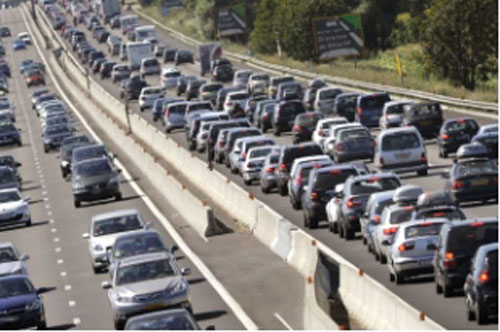.jpg)
Ramot, Jerusalem—October 7, 2013 1:30 p.m.—The passing of Rabbi Ovadia Joseph, the leader of the Shas movement and spiritual leader to thousands of Sephardic Jews in Israel, is announced to the public.
For Gabi Davidi and his family, this was supposed to be the happiest day of his life. That evening, he was getting married to the girl of his dreams, Deena Weiss, also from Ramot. They prepared for this day for months—hall, band, photographer, invitations, dress, guest lists and now the worst happens….someone dies. Not just an aged aunt, but the Maran—Rav Ovadia. In addition to their family being followers of Rav Ovadia and devastated by the loss, the fact that the funeral was in Jerusalem, not far from their home, made everything more complicated. In the Jewish tradition, once a wedding day is set you are not supposed to postpone it. You can make it earlier, but no postponements, no matter what.
It was predicted that hundreds of thousands of people would be attending the funeral, called for 6:00 p.m. and for the Davidi and Weiss families, final preparations for the wedding went from hurried to frantic—they had to get out of Jerusalem as fast as they could, avoiding the Tel Aviv/Jerusalem highway and using the back roads to get to the wedding hall located near Rechovot.
Gelilot, Hertzlia—For Yossi Ben Naim this was supposed to be a regular work day— get up at 6:00 a.m., catch the bus and be at work by 8:00 a,m. But when the notification of the loss came at 2:00 p.m., things came to a halt. The rabbis claim that there is no greater mitzvah than “escorting the dead” (going to a funeral), since the deceased cannot return the favor. For Rav Ovadia it was a befitting goodbye for all the years of service in the name of the Torah and for returning the pride of the Sephardi community in the State of Israel. For Yossi, going to the funeral was a given, but he needed to get back to Jerusalem in time for the funeral. He quickly got a ride from a co-worker to his parent’s home in Ramot.
Kochav Hashachar, Israel—For me, the decision was obvious, though I respected Rabbi Ovadia very much, I was invited to the wedding of Gabi and Deena and was concerned that many people would not come to the wedding because of the funeral. So I decided to go to the wedding. The only problem was that to get to Rechovot from Kochav Hashachar you usually need to go through Jerusalem.
7:00 p.m. Israel time, Gabi and Reut look at their clocks and at the small crowd of people who have shown up. The chuppah (wedding ceremony) is called for 7:30 and the guests are trickling in very slowly.
Yossi is in the middle of walking the four kilometers (2.5 miles) from his parent’s home in Ramot to the funeral; nothing else made sense, since all the roads were blocked.
I knew that the funeral was going to be a large one and roads were going to be closed, but didn’t realize how bad it was going to be. I decided that it was very important to go to the wedding and by 7:00 in the evening I was sitting in the worst traffic jam I had ever seen. All the exits going to the northern neighborhoods from the Begin Highway were closed—Ramot, Givaat Shaul, Kiryat Moshe. I was finally able to get off at Givaat Mordecai exit and through the back roads of the northern neighborhoods, get on the Jerusalem Highway via the Ginot Sacharov exit.
While driving along the Begin Highway, I noticed people were parking their cars along the shoulders of the highway and walking into the city. The highway had turned into a large parking lot—from three lanes, it became a road with only one lane.
I had never seen anything like it, and I was stuck in it! I thought that from there, the road to the wedding was clear. I was almost right. But the three lane highway going up to Jerusalem became a parking lot for the fleet of buses that came to the funeral, whereas the road going out of Jerusalem was open. As I was driving past the buses parked on my side of the road, three boys waved me down—they were trying to get back to their yeshiva in Mevaseret five kilometers (three miles) away and started walking, since they had no other way of getting back. I dropped them off on the highway near the exit to Mevaseret and told them they had taken part in an important event in history.
The final numbers of attendees to the funeral totaled more than 850,000 people from all walks of life—the largest funeral ever in Israrel. Where else does ten percents of the population attend a funeral?
Some other notable rabbinical funerals over the years: July 18, 2012 the funeral of Rav Sholom Elyashiv, had 250,000 attendees. June, 2010: Rav Mordecai Eliyahu had 200,000; November, 1990: Rabbi Meir Kahane–150,000; March, 1986: Rabbi Moshe Feinstein, 200,000 Only 40,000 people went to Yitzchak Rabin’s funeral.
I arrived at the wedding at 9:00 p.m., after the chuppah, but it seemed that most of the people showed up after all. Better late than never. Mazal Tov!
By Judy Yazersky










